Research Results
1. Researchers reveal how parasitic plants evolved
 Parasitic plants are special plants with a unique physiology, ecology, and evolutionary history. Little is known, however, about their origin and evolution. Some naturally occurring parasitic plants become obligate parasites on their host to complete their life cycle. Parasitic plants evolved independently many times. The family Orobanchaceae, the largest family of parasitic plants, includes autotrophs and parasitic plants of all degrees. Yuxing Xu at the Kunming Institute of Botany, China, and colleagues provide three high-quality genomes of orobanchaceous plants: the autotrophic Lindenbergia luchunensis; and the holoparasitic (obligate) plants, Phelipanche aegyptiaca and Orobanche cumana.
Parasitic plants are special plants with a unique physiology, ecology, and evolutionary history. Little is known, however, about their origin and evolution. Some naturally occurring parasitic plants become obligate parasites on their host to complete their life cycle. Parasitic plants evolved independently many times. The family Orobanchaceae, the largest family of parasitic plants, includes autotrophs and parasitic plants of all degrees. Yuxing Xu at the Kunming Institute of Botany, China, and colleagues provide three high-quality genomes of orobanchaceous plants: the autotrophic Lindenbergia luchunensis; and the holoparasitic (obligate) plants, Phelipanche aegyptiaca and Orobanche cumana.
By combining these newly sequenced genomes with existing data, the researchers conducted a comparative genomic analysis of parasitic plants, revealing the evolution of matching parasite genomes. They found that unlike the dodders— parasitic plants of the genus Cuscuta—the orobanchaceous parasitic plants did not experience drastic shrinkage in genome size and gene count. Using haustorium replication data, the researchers identified genes that expressed rapidly in the genomes of various parasitic plants and found that these genes also undergo expansion. The results suggest that recent gene family expansions may have facilitated the adaptation of orobanchaceous parasites to different hosts. This study illustrates a stepwise pattern in the evolution of parasitism in the orobanchaceous parasites, and it will facilitate future studies on parasitism and the control of parasitic plants in agriculture.
For more, see https://phys.org/news/2022-07-reveal-parasitic-evolved.html?utm_source=nwletter&utm_medium=email&utm_campaign=daily-nwletter
Access the full paper at https://www.cell.com/action/showPdf?pii=S1674-2052%2822%2900227-1
2. Regulation of fleshy fruit ripening: From transcription factors to epigenetic modifications
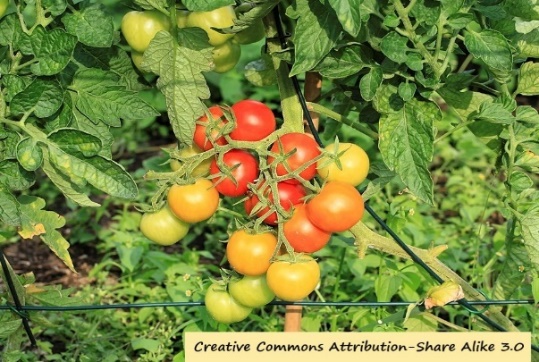 All fleshy fruits undergo a complex ripening process, developing organoleptic fruit traits that attract herbivores and maximize seed dispersal. Ripening is the final stage of fruit development. It involves a series of physiological and biochemical changes. Professor Chunxiang You from Shandong Agricultural University, China, and his colleagues reviewed the process of regulation of fruit ripening. They note that the mechanisms underlying fruit ripening rely on the orchestration of ripening-related transcription factors (TFs), plant hormones, and epigenetic modifications. Ethylene induces a well-organized signalling pathway that coordinates plant growth and development and fruit ripening, and substantial evidence suggests that ethylene, together with endogenous plant hormones and other bioreceptors, functions with TFs associated with ripening to regulate fruit ripening synchronously.
All fleshy fruits undergo a complex ripening process, developing organoleptic fruit traits that attract herbivores and maximize seed dispersal. Ripening is the final stage of fruit development. It involves a series of physiological and biochemical changes. Professor Chunxiang You from Shandong Agricultural University, China, and his colleagues reviewed the process of regulation of fruit ripening. They note that the mechanisms underlying fruit ripening rely on the orchestration of ripening-related transcription factors (TFs), plant hormones, and epigenetic modifications. Ethylene induces a well-organized signalling pathway that coordinates plant growth and development and fruit ripening, and substantial evidence suggests that ethylene, together with endogenous plant hormones and other bioreceptors, functions with TFs associated with ripening to regulate fruit ripening synchronously.
Researchers found, using tomato as an example, that TFs such as NAC, NOR, MOR-like1, HB-1, WRKY1, GRAS/38, ARF2A/2B, and AREB regulate the expression of ethylene and the genes involved in ripening in an ethylene-dependent manner, thereby positively regulating fruit ripening. The role of epigenetic changes in tomato fruit ripening includes DNA methylation, histone methylation, and acetylation, with DNA methylation and histone H3K27me3 methylation being the herd epigenetic markers. N6-Methyladenosine is the most common mRNA modification in eukaryotes, and recent studies have revealed a feedback loop between m6A mRNA modification and the DNA methylation which regulates tomato fruit ripening. In conclusion, the authors consider the functional model of phytohormones, TFs involved in ripening, and epigenetic modifications for the dynamic regulation of tomato fruit ripening, which “could serve as a guide when studying the mechanisms that regulate ripening in fruit species” and thus “guide new strategies for effective use.”
Access the full paper at https://academic.oup.com/hr/article/doi/10.1093/hr/uhac013/6526914?login=false
3. Figuring out how wild wheat protects itself from insects
 Wheat is a major crop, which provides 20% of the calorie intake of the world’s population, as well as some of its protein intake. Although wheat is essential for human and animal nutrition, its plants are constantly infested with several herbivorous insects, which often cause severe damage and lead to significant yield reductions. Among the most serious threats is aphids [bird cherry-oat aphid (Rhopalosiphum padi)], tiny insects that suck nutrients from wheat and carry deadly plant viruses. Wild wheat has at least two methods of protection against insect pests, Professor Vered Tzin and colleagues at the Jacob Blaustein Institutes for Desert Research, Ben-Gurion University of the Negev, Midreshet Ben Gurion, Israel, have discovered. They studied the wild emmer (Triticum dicoccum) wheat, which has long been found in the Fertile Crescent and is the ancestor of durum (T. durum) and bread (T. aestivum) wheats.
Wheat is a major crop, which provides 20% of the calorie intake of the world’s population, as well as some of its protein intake. Although wheat is essential for human and animal nutrition, its plants are constantly infested with several herbivorous insects, which often cause severe damage and lead to significant yield reductions. Among the most serious threats is aphids [bird cherry-oat aphid (Rhopalosiphum padi)], tiny insects that suck nutrients from wheat and carry deadly plant viruses. Wild wheat has at least two methods of protection against insect pests, Professor Vered Tzin and colleagues at the Jacob Blaustein Institutes for Desert Research, Ben-Gurion University of the Negev, Midreshet Ben Gurion, Israel, have discovered. They studied the wild emmer (Triticum dicoccum) wheat, which has long been found in the Fertile Crescent and is the ancestor of durum (T. durum) and bread (T. aestivum) wheats.
The emmer wheat produces a toxin—a phytochemical called a benzoxazinoid (BXD)—that discourages insects from eating the wheat. BXDs are specialized metabolites that are highly abundant in staple crops, such as maize and wheat. A dual fluorescence assay conducted showed that TaMYB31 binds to the Bx1 and Bx4 gene promoters, and it activates the transcription of genes involved in the BXD pathway. Secondly, wild wheat has a layer of “hair” (i.e., trichomes) that prevents insects from finding a place to enter the stem. Researchers examined a large dataset of trichome density and BXD abundance in several wheat genotypes, different leaf positions, conditions such as constitutive and aphid-induced, and tissues (whole leaf and phloem sap). The results suggest that the defence mechanisms in the whole leaf are primarily anticipatory and unlikely to contribute to aphid-induced defence. Tzin and colleagues recommend that germplasm accessions that are rich with trichomes and BXDs, can be used as new genetic sources to improve the resistance of elite wheat cultivars.
Access the abstract (of paper 1) at https://academic.oup.com/jxb/advance-article-abstract/doi/10.1093/jxb/erac204/6585022?redirectedFrom=fulltext&login=false
Access the full paper (paper 2) at https://www.frontiersin.org/articles/10.3389/fpls.2021.667820/full
4. Genetically increasing wheat yield potential for food security
The disruptions in global trading markets resulting from the war in Ukraine, among other causes, have focused public attention on the issue of securing a sufficient supply of high-quality foods for the global population. In terms of arable land, wheat is one of the most important cereal varieties and plays a vital role as a staple  food. The wheat crisis threatens food security and world peace. An international team of researchers, led by Nimai Senapati at Rothamsted Research, Harpenden, UK, has been examining the possibility of closing the existing genetic yield gap (Yig) by the genetic improvement that could increase crop yield potential and global production. By estimating the present global wheat yield, covering all wheat-growing environments and major producers, and by optimizing local wheat cultivars using the wheat model Sirius, they suggest that the estimated mean global Yig was 51%. The researchers believe that global wheat production could benefit greatly from exploiting the untapped global Yig by using optimal cultivar designs, utilization of the vast variation available in wheat genetic resources, application of modern advanced breeding tools, and continuous improvements in crop and soil management.
food. The wheat crisis threatens food security and world peace. An international team of researchers, led by Nimai Senapati at Rothamsted Research, Harpenden, UK, has been examining the possibility of closing the existing genetic yield gap (Yig) by the genetic improvement that could increase crop yield potential and global production. By estimating the present global wheat yield, covering all wheat-growing environments and major producers, and by optimizing local wheat cultivars using the wheat model Sirius, they suggest that the estimated mean global Yig was 51%. The researchers believe that global wheat production could benefit greatly from exploiting the untapped global Yig by using optimal cultivar designs, utilization of the vast variation available in wheat genetic resources, application of modern advanced breeding tools, and continuous improvements in crop and soil management.
Another international team, led by Matthew Paul Reynolds from the International Maize and Wheat Improvement Center (CIMMYT), Texcoco, Mexico, proposes a wiring diagram as a platform to illustrate the interrelationships of the physiological traits that impact wheat yield potential and to serve as a decision support tool for crop scientists. The wiring diagram is based on the premise that crop yield is a function of photosynthesis (source), investment in the reproductive organ (sink), and the underlying processes that allow expression of both. The proposed wiring diagram shows connections between features that may not be obvious and can shed light on new research hypotheses and directions. This can assist crop improvement scientists to design crosses to accumulate beneficial traits and alleles through crossbreeding. Wiring diagrams can also be used to create an increasingly rich common point of reference for future refinement of culture models.
For more, see https://phys.org/news/2022-08-genetically-wheat-yield-potential-food.html l
Access the abstract (1) at https://www.nature.com/articles/s43016-022-00540-9
Access the abstract (2) at https://www.nature.com/articles/s43016-022-00540-9
5. The novel leucine-rich repeat receptor-like kinase MRK1 regulates resistance to multiple stresses in tomato
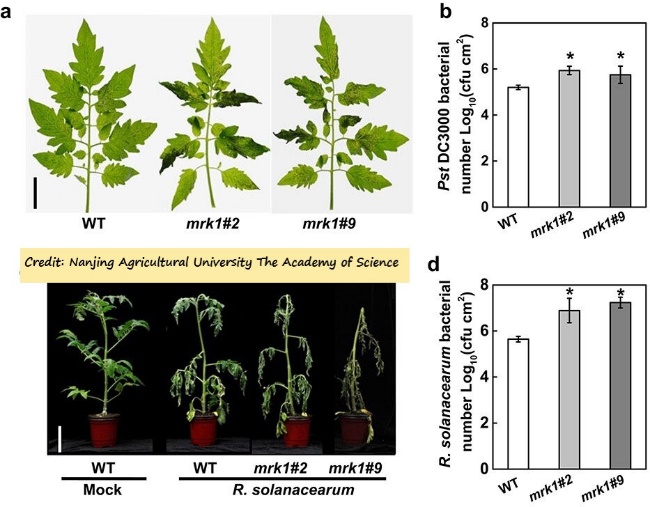 Tomato (Solanum lycopersicum L.) is an economically important vegetable crop worldwide, and its production is threatened by temperature fluctuations and pathogen attacks, causing severe crop losses. Zhejiang University researchers from China, led by Kai Shi, have characterized a positive regulator of resistance to multiple stresses in tomatoes. The researchers generated tomato mrk1 mutants by editing the CRISPR/Cas9 gene. The mrk1 (Multiple resistance-associated kinase 1) mutants show increased susceptibility to heat and cold stress, as demonstrated by changes in plant phenotype, decreased peak photochemical efficiency of PSII, and increased relative electrolyte leakage. Compared with wild-type plants, the mrk1 mutant showed poor expression of C-repeat binding factor 1 (CBF1) and Heat shock transcription factor a-1a (HsfA1a), which play a key role in the plant’s response to hot and cold stress, when exposed to cold and heat.
Tomato (Solanum lycopersicum L.) is an economically important vegetable crop worldwide, and its production is threatened by temperature fluctuations and pathogen attacks, causing severe crop losses. Zhejiang University researchers from China, led by Kai Shi, have characterized a positive regulator of resistance to multiple stresses in tomatoes. The researchers generated tomato mrk1 mutants by editing the CRISPR/Cas9 gene. The mrk1 (Multiple resistance-associated kinase 1) mutants show increased susceptibility to heat and cold stress, as demonstrated by changes in plant phenotype, decreased peak photochemical efficiency of PSII, and increased relative electrolyte leakage. Compared with wild-type plants, the mrk1 mutant showed poor expression of C-repeat binding factor 1 (CBF1) and Heat shock transcription factor a-1a (HsfA1a), which play a key role in the plant’s response to hot and cold stress, when exposed to cold and heat.
Mrk1 mutants were more sensitive to Pseudomonas syringae pv. tomato DC3000 and Ralstonia solanacearum. The results of this study indicate that MRK1 positively regulates several pattern-triggered immunity (PTI) responses. Immunoprecipitation co-precipitation assay showed that the interaction of MRK1 with bacterial flagellin receptors FLS2 (Flagellin sensing 2) and the end receptors, suggesting that MRK1 plays an active role in antimicrobial immunity by how it acts as a component of the complex FLS2 and receptors to modulate PTI responses. This work demonstrates that tomato MRK1 is a novel positive regulator of multiple stress responses and may be a potential breeding target for improving crop stress resistance.
Access the full paper at https://academic.oup.com/hr/article/doi/10.1093/hr/uhab088/6511832?login=false
6. Designing synthetic genetic circuits that could help plants adapt to pressures from climate change
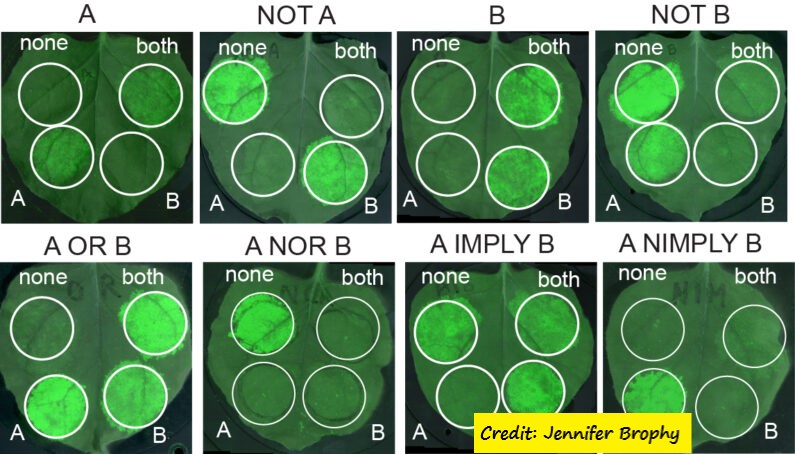 Increasingly, global food production is being threatened by the effects of climate change. As floods, droughts, and extreme heat waves become more common, crops need to be able to adapt faster than ever. Researchers at Stanford University tested if they could manipulate biological processes in plants to help them grow more efficiently in several different conditions. For example, synthetic engineering offers the opportunity to build new functional circuits into existing developmental programmes. Jennifer Brophy and her colleagues have designed a series of synthetic genetic circuits that allow them to control the decisions of several types of plant cells. Their work is the first step in designing crops that are better able to harvest water and nutrients from the soil, and it provides a framework for designing, testing, and improving genetic circuits..
Increasingly, global food production is being threatened by the effects of climate change. As floods, droughts, and extreme heat waves become more common, crops need to be able to adapt faster than ever. Researchers at Stanford University tested if they could manipulate biological processes in plants to help them grow more efficiently in several different conditions. For example, synthetic engineering offers the opportunity to build new functional circuits into existing developmental programmes. Jennifer Brophy and her colleagues have designed a series of synthetic genetic circuits that allow them to control the decisions of several types of plant cells. Their work is the first step in designing crops that are better able to harvest water and nutrients from the soil, and it provides a framework for designing, testing, and improving genetic circuits..
Synthetic genetic circuits designed to roll back gene expression in plant roots can be used to alter the way they grow. After designing more than 1,000 potential circuits that can control gene expression in plants, Brophy and colleagues are now studying the possibility of using their genetic circuits to manipulate the root structure of sorghum, a plant that can be refined into biofuel, to help it absorb water and conduct photosynthesis. This work demonstrates the potential of synthetic genetic circuits to control gene expression across tissues and reprogram plant growth. Brophy says that this work is about making sure that crops can grow even when the environmental conditions are not suitable.
For more, see https://news.stanford.edu/2022/08/11/synthetic-genetic-circuits-help-plants-adapt-climate-change/
Access the abstract at https://www.science.org/doi/10.1126/science.abo4326
7. Effects of drought legacy on root morphological traits and plant biomass via soil biota feedback
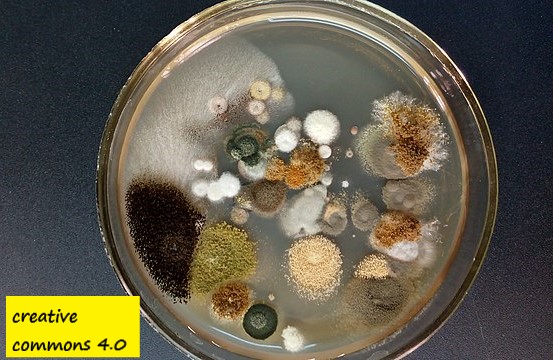 Drought causes soil feedback effects on plant performance. But it is not known how the linkages between conditioned soil biota and root traits contribute to explaining plant–soil feedback (PSF) as a function of drought. Yudi Lozano from the Freie Universität Berlin, Germany, used soil inoculum from a conditioning experiment in which grassland species were grown under drought and water availability and analysed the soil fungi in them. Under well-watered conditions, they grew 21 grassland species with identified inoculants from specific or non-specific soils. At harvest, plant biomass and root characteristics were measured.
Drought causes soil feedback effects on plant performance. But it is not known how the linkages between conditioned soil biota and root traits contribute to explaining plant–soil feedback (PSF) as a function of drought. Yudi Lozano from the Freie Universität Berlin, Germany, used soil inoculum from a conditioning experiment in which grassland species were grown under drought and water availability and analysed the soil fungi in them. Under well-watered conditions, they grew 21 grassland species with identified inoculants from specific or non-specific soils. At harvest, plant biomass and root characteristics were measured.
They found that the negative PSF (higher biomass in heterospecific than in conspecific soils) predominates and is favoured in drought-conditioned soils. Previous droughts affected the relationship between root traits and fungal groups. Specific root surface area (SRSA) was higher in nonspecific dry soils than in specific dry soils and was associated with increased nutrient richness. In general, higher root diameters were found in conspecific soils and the increases in the root diameter were related to the pathogen composition, whereas the decrease of root : shoot in heterospecific soils was linked to pathogenic fungi. A decrease in the root : shoot ratio in nonspecific soils was associated with fungal diseases. Drought legacy affects root biomass and morphological traits through conditioned soil biota, even after drought conditions have subsided. The results showed strong linkages between fungal communities and root traits in modulating PSF.
For more, see https://nph.onlinelibrary.wiley.com/doi/10.1111/nph.18327
8. How do rootstocks mediate scion salinity tolerance in tomato under salt stress?
 Grafting has been demonstrated to significantly enhance the salt tolerance of crops. Breeding efforts to develop enhanced graft combinations are hindered, however, by knowledge gaps as to how rootstocks mediate scion response to salt stress. By grafting cuttings onto different rootstocks, the salinity tolerance of the grafts can be altered and improved in tomato, for example, resulting in improved plant growth, yield, and fruit quality. The increased salt tolerance, as demonstrated by an improvement in growth viability or physiological yield of grafted tomatoes, is due to the interaction between grafted shoots and rootstocks. Scientists from the Albert Katz International School for Desert Studies, Israel, led by Aaron Fait, grafted the scion of cultivated M82 onto rootstocks of 254 tomato accessions and explored the morphological and metabolic responses of grafts under saline conditions (EC = 20 dS m−1), as compared to self-grafted M82 (SG-M82).
Grafting has been demonstrated to significantly enhance the salt tolerance of crops. Breeding efforts to develop enhanced graft combinations are hindered, however, by knowledge gaps as to how rootstocks mediate scion response to salt stress. By grafting cuttings onto different rootstocks, the salinity tolerance of the grafts can be altered and improved in tomato, for example, resulting in improved plant growth, yield, and fruit quality. The increased salt tolerance, as demonstrated by an improvement in growth viability or physiological yield of grafted tomatoes, is due to the interaction between grafted shoots and rootstocks. Scientists from the Albert Katz International School for Desert Studies, Israel, led by Aaron Fait, grafted the scion of cultivated M82 onto rootstocks of 254 tomato accessions and explored the morphological and metabolic responses of grafts under saline conditions (EC = 20 dS m−1), as compared to self-grafted M82 (SG-M82).
They demonstrated phenotypic diversity in shoots and metabolic disturbances in leaves, both regulated by different rootstocks in response to salinity. Six metabolites that consistently characterized exceptional graft response were observed, consisting of sorbose, galactose, sucrose, fructose, myo-inositol, and proline. The correlation analysis and predictive modelling, integrating phenotype- and leaf metabolite data, suggest a potential predictive relation between a set of leaf metabolites and yield-related traits. These results help better understand graft biology with abiotic stress and provide metabolic markers for the selection of rootstock-mediated salinity tolerance. To make further progress in combating salinity through grafting, the researchers suggest that future studies should tackle the regulatory mechanisms underlying these associations to fully exploit the potential.
Access the full paper at https://academic.oup.com/hr/article/doi/10.1093/hr/uhac061/6548274?login=false
Potential Crops/Technologies/Concepts
1. Researchers use the science of light to reduce potential pesticide use in crop protection measures
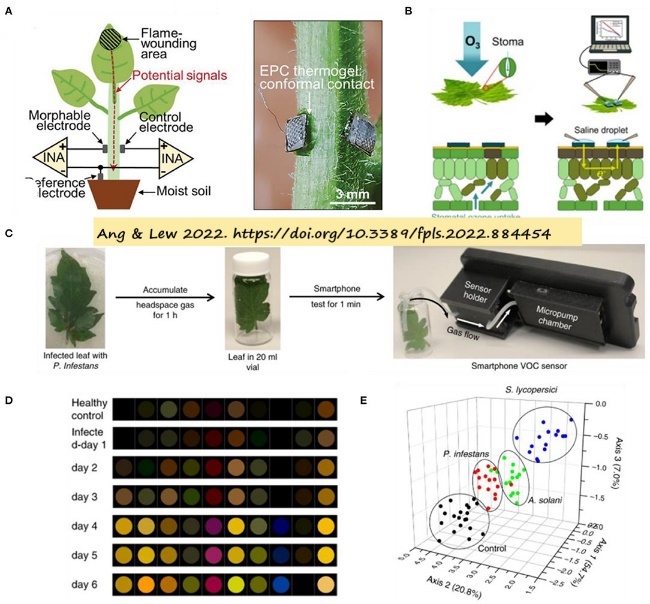 Pests (insects, diseases, and other organisms) take a toll on several crops the world over. According to the Food and Agriculture Organization of the United Nations, up to 40% of global agricultural production is lost each year to pests and diseases. Crop diseases cost the world economy more than $220 billion annually and insect pests at least $70 billion, in addition to the costs of exceedingly high use of chemicals to control them, which also results in environmental pollution. Early detection of such diseases can help to reduce the losses and costs of production and pollution. Experts from two universities in the Midlands, UK, are collaborating to develop a photonic ‘nose’ to monitor crops for pest infestations and crop diseases. Aston University is partnering with Harper Adams University to research and develop technology that uses light to monitor plant health.
Pests (insects, diseases, and other organisms) take a toll on several crops the world over. According to the Food and Agriculture Organization of the United Nations, up to 40% of global agricultural production is lost each year to pests and diseases. Crop diseases cost the world economy more than $220 billion annually and insect pests at least $70 billion, in addition to the costs of exceedingly high use of chemicals to control them, which also results in environmental pollution. Early detection of such diseases can help to reduce the losses and costs of production and pollution. Experts from two universities in the Midlands, UK, are collaborating to develop a photonic ‘nose’ to monitor crops for pest infestations and crop diseases. Aston University is partnering with Harper Adams University to research and develop technology that uses light to monitor plant health.
The researchers are using recent developments in photonics technology that can analyse low levels of volatile organic compounds released by plants, indicating their health. Professor David Webb of the Aston Institute of Photonic Technology says that “better technologies for monitoring invertebrate pests and plant diseases will help reduce crop damage.” Reducing crop losses in existing production systems will improve food security without increasing resource use. The authors highlight the potential for developing such new plant health monitoring platforms, which can improve agricultural production through on-site pest and disease surveillance to detect hotspots.
Access a related paper at https://www.frontiersin.org/articles/10.3389/fpls.2022.884454/full
2. Growing cereal crops with less fertilizer
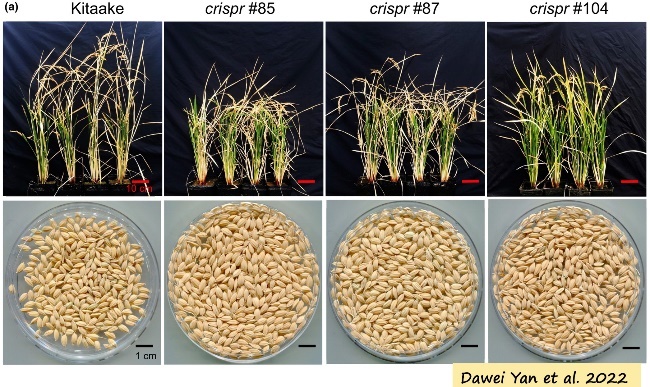 Nitrogen is essential for plant growth, and farms depend on nitrogen in soils and on chemical fertilizers to increase yields. For several decades, scientists have been working on methods for improving biological nitrogen fixation (BNF) in cereal crops; however, there has been no successful report so far. Researchers from the University of California, Davis, led by Eduardo Blumwald, describe a novel approach in which rice plants are engineered to increase the production of compounds that stimulate biofilm formation in soil diazotrophic bacteria, promoting bacterial colonization in plant tissues and improved BNF with increased grain yield by limiting the nitrogen content of the soil.
Nitrogen is essential for plant growth, and farms depend on nitrogen in soils and on chemical fertilizers to increase yields. For several decades, scientists have been working on methods for improving biological nitrogen fixation (BNF) in cereal crops; however, there has been no successful report so far. Researchers from the University of California, Davis, led by Eduardo Blumwald, describe a novel approach in which rice plants are engineered to increase the production of compounds that stimulate biofilm formation in soil diazotrophic bacteria, promoting bacterial colonization in plant tissues and improved BNF with increased grain yield by limiting the nitrogen content of the soil.
Blumwald and colleagues focused on the increasing conversion of atmospheric nitrogen to ammonium by soil bacteria. If plants can produce chemicals that allow soil bacteria to fix atmospheric nitrogen, then cereal plants can be modified to make more of these chemicals that induce nitrogen fixation by bacteria in the soil and plants will then use the ammonium formed, thereby reducing the amount of fertilizer used. Researchers found that when grown in soils with limiting nitrogen conditions, modified rice plants produced higher grain yield. They noted that the biofilm production modified the root microbiome structure in a way that it favoured the enrichment of diazotrophic bacteria colonization. These results support the manipulation of the flavone biosynthetic pathway as a feasible strategy for the induction of biological nitrogen fixation in cereals and a reduction in the use of inorganic nitrogen fertilizers. Thus, this method has exciting potential for growing cereal crops with less nitrogenous fertilizer application.
For more, see https://phys.org/news/2022-08-cereal-crops-fertilizer.html?utm_source=nwletter&utm_medium=email&utm_campaign=daily-nwletter
Access the full paper at https://onlinelibrary.wiley.com/doi/epdf/10.1111/pbi.13894
3. Shedding light on more efficient ways to breed cassava
Over 800 million people across the tropics rely on cassava (Manihot esculenta Crantz) as a major source of calories as well as income. Cassava is a popular crop in Nigeria, as well as in other nations of Africa, and the quality of tubers is a decisive factor in the success of new cassava varieties. While the root dry-matter content (RDMC) is important for both producers and consumers, the characterization of RDMC by traditional methods is time-consuming and laborious for breeding 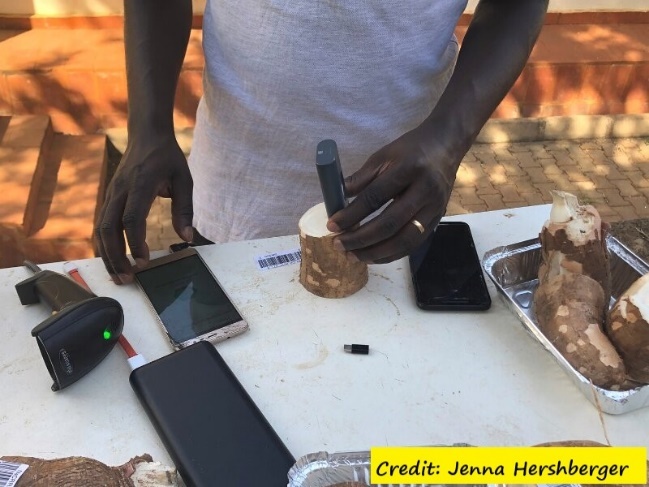 programmes. Alternate phenotyping methods have been proposed but lack the accuracy, cost, or speed ultimately needed for cassava breeding programmes.
programmes. Alternate phenotyping methods have been proposed but lack the accuracy, cost, or speed ultimately needed for cassava breeding programmes.
For this reason, Jenna Hershberger and colleagues at the Cornell University, Ithaca, USA, together with researchers at the International Institute of Tropical Agriculture, Ibadan, Nigeria, investigated the use of a low-cost, handheld near-infrared spectrometer (740–1070 nm) for field-based RDMC prediction in cassava. In this method, the light hits the surface of the cassava tuber and is reflected, and the unique properties of cassava affect the precise pattern of reflected light. Researchers used statistical models to relate spectral reflectance patterns to root dry-matter content in 10 trials in cassava fields. Through their work, they found that the environment in which cassava grows is important to consider in the model. With appropriate model calibration, the tested spectrometer will allow the collection of spectral data right in the field with a smartphone for accurate RDMC prediction and potentially other quality traits. This step could easily be integrated into existing harvesting workflows of cassava breeding programmes, and thus help greatly in improving cassava breeding.
For more, see https://phys.org/news/2022-07-efficient-ways-cassava.html?utm_source=nwletter&utm_medium=email&utm_campaign=daily-nwletter
Access the full paper at https://acsess.onlinelibrary.wiley.com/doi/10.1002/ppj2.20040
4. Tepary beans offer producers a low-input, climate-resilient legume alternative
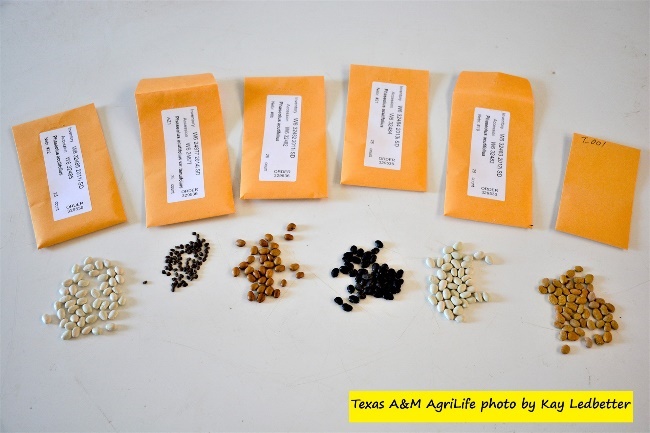 Tepary beans (Phaseolus acutifolius), an ancient crop native to the northern part of Mexico and the southwestern part of the USA, are among the most drought-tolerant legume crops in the world, but at one time, they were almost an endangered species in the US. Waltram Ravelombola, a Texas speciality and organic plant breeder with A&M AgriLife Research in Vernon, has attempted to integrate tepary beans into modern crop and dietary systems.
Tepary beans (Phaseolus acutifolius), an ancient crop native to the northern part of Mexico and the southwestern part of the USA, are among the most drought-tolerant legume crops in the world, but at one time, they were almost an endangered species in the US. Waltram Ravelombola, a Texas speciality and organic plant breeder with A&M AgriLife Research in Vernon, has attempted to integrate tepary beans into modern crop and dietary systems.
He used 265 accessions he obtained from the USDA Genetic Resources Information Network for the development of high-throughput genomic and phenotypic resources for adaptation to arid soil conditions, and to develop varieties of tepary beans that are more suitable for the arid regions of the United States. He plans to use drone technology to determine field phenotypes, perform whole-genome re-sequencing to identify key genes and genetic markers, and then go on to select genome filtering in tepary beans. Thus, the enormous potential for tepary beans to regain their position as crops grown in arid regions of the USA (and maybe in other countries as well) can be tapped, helping also in crop diversification with nitrogen-fixing legumes.
For more, see https://agrilifetoday.tamu.edu/2022/07/27/tepary-beans-offer-producers-a-low-input-climate-resilient-legume-alternative/
5. Research shows oilseeds’ potential for bioproduct creation
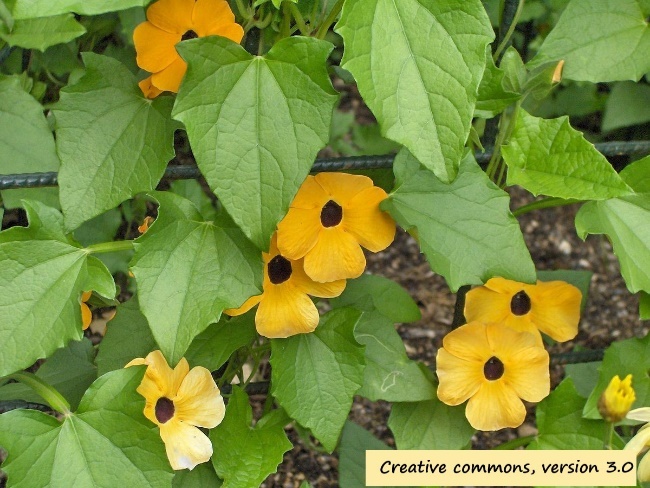 Research on fatty acids is opening new opportunities to develop environmentally friendly bioproducts—fuels, lubricants, and other products that could substitute for petroleum-based ones. A major focus involves new vegetable oils whose fatty acid structure allows the production of biomaterials in significant quantities. To create those oils on a scale needed, scientists must first understand the oils’ enzymes and genes. Because of their distinct properties, these enzymes are particularly suitable to produce fatty acid-rich transgenic plants. Scientists studied a specific, unusual fatty acid in Thunbergia (a genus of flowering plants in the family Acanthaceae), a tropical vine. The acid is unusual in that the plant chemicals have unconventional molecular chains that give new functional properties to vegetable oils.
Research on fatty acids is opening new opportunities to develop environmentally friendly bioproducts—fuels, lubricants, and other products that could substitute for petroleum-based ones. A major focus involves new vegetable oils whose fatty acid structure allows the production of biomaterials in significant quantities. To create those oils on a scale needed, scientists must first understand the oils’ enzymes and genes. Because of their distinct properties, these enzymes are particularly suitable to produce fatty acid-rich transgenic plants. Scientists studied a specific, unusual fatty acid in Thunbergia (a genus of flowering plants in the family Acanthaceae), a tropical vine. The acid is unusual in that the plant chemicals have unconventional molecular chains that give new functional properties to vegetable oils.
Thunbergia is an ornamental vine and looks beautiful. but it is not grown as a crop. However, if the genes that make the unusual fatty acid are identified, then one can engineer them into sorghum or oilseed crops to create higher-value oils. Among the enzymes identified is one called fatty acid desaturase, which places double bonds—unsaturated—to new positions in fatty acids. As a result, these fatty acids have novel functional properties to vegetable oils. Researchers used this information to develop enzymes that produce non-naturally occurring monounsaturated fatty acids and sourced genes from these species to engineer oilseeds and bacteria for modified fatty acid composition.
Access the full paper at https://www.pnas.org/doi/full/10.1073/pnas.2201160119
News:
1. Urban gardens—quantity and quality
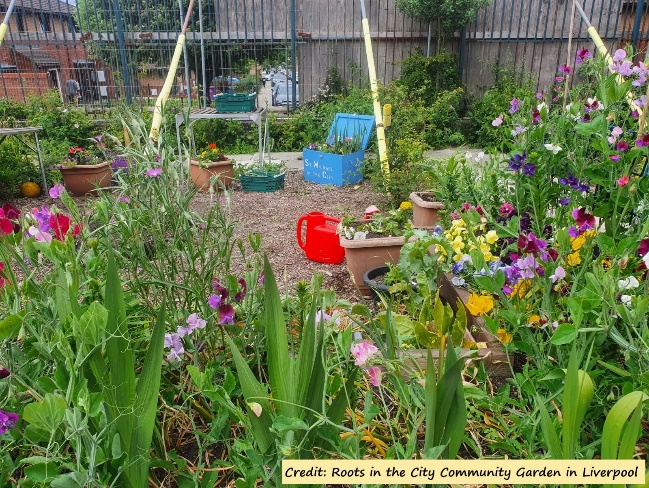 With increasing urban populations, the importance of urban agriculture/gardening is growing as a local food source and to help combat inequity in access to food. In addition, growing food near or close to where it is mostly consumed is also gaining foot due to the low carbon footprint of such a practice. Thus, urban agriculture can contribute to food security, food system resilience, and sustainability at the city level. But little is known about how productive urban agriculture is compared to conventional, rural farming and how it will compare in some quality traits. There have been some studies recently that focus on these issues, with some useful findings for potential application.
With increasing urban populations, the importance of urban agriculture/gardening is growing as a local food source and to help combat inequity in access to food. In addition, growing food near or close to where it is mostly consumed is also gaining foot due to the low carbon footprint of such a practice. Thus, urban agriculture can contribute to food security, food system resilience, and sustainability at the city level. But little is known about how productive urban agriculture is compared to conventional, rural farming and how it will compare in some quality traits. There have been some studies recently that focus on these issues, with some useful findings for potential application.
Florian Thomas Payen and colleagues from the Lancaster Environment Centre, Lancaster University, UK, carried out a global meta-analysis to quantify crop yields of urban agriculture for a broad range of crops and explore differences in yields for distinct urban spaces and growing systems. They found 200 studies reporting urban crop yields, from which 2,062 observations were extracted. They observed high agronomic suitability of urban areas, with urban agricultural yields on par with or greater than global average conventional agricultural yields. This analysis provides a more robust, globally relevant evidence base on the productivity of urban agriculture, which can be used in future research and practice.
In addition, urban agriculturists/gardeners face other kinds of challenges as well, one of them being the idea that the produce from urban soils may have greater chances of absorbing more lead (which is toxic to humans and animals) than crops grown in rural soils—especially the leafy greens—as urban soils may be contaminated more with this element. Sara Perl Egendorf and colleagues from the University of New York, USA, found that washing effectively removed lead contamination from lettuce leaves, making them safe to consume.
For more, see (1) https://phys.org/news/2022-08-urban-crops-higher-yields-conventional.html?utm_source=nwletter&utm_medium=email&utm_campaign=daily-nwl%E2%80%A6 and (2) https://phys.org/news/2022-08-effectively-vegetables-grown-urban-soil.html?utm_source=nwletter&utm_medium=email&utm_campaign=daily-nwl%E2%80%A6
Access the full paper at (1) https://phys.org/news/2022-08-effectively-vegetables-grown-urban-soil.html?utm_source=nwletter&utm_medium=email&utm_campaign=daily-nwl%E2%80%A6 and
(2) https://acsess.onlinelibrary.wiley.com/doi/10.1002/jeq2.20357
Access the abstract at https://agupubs.onlinelibrary.wiley.com/doi/10.1029/2022EF002748 And — https://pubmed.ncbi.nlm.nih.gov/26828157/
2. Novel technology to reduce the complexity of maize seed production and increase maize hybrid yields in farmer’s fields
 A study by Michael Olsen of the International Maize and Wheat Improvement Centre (CIMMYT), Nairobi, Kenya, and colleagues demonstrates the potential of a new seed production technology to transform seed production systems in Africa, with significant benefits to small-scale maize farmers and seed companies in sub-Saharan Africa. The new method, in addition to providing higher seed yields to farmers through a 50% non-pollen-producing (FNP) characterization, will reduce the complexity of seed production, allowing seed growers to provide improved hybrid seeds with an adequately high purity for farming households.
A study by Michael Olsen of the International Maize and Wheat Improvement Centre (CIMMYT), Nairobi, Kenya, and colleagues demonstrates the potential of a new seed production technology to transform seed production systems in Africa, with significant benefits to small-scale maize farmers and seed companies in sub-Saharan Africa. The new method, in addition to providing higher seed yields to farmers through a 50% non-pollen-producing (FNP) characterization, will reduce the complexity of seed production, allowing seed growers to provide improved hybrid seeds with an adequately high purity for farming households.
Access the full paper at https://www.nature.com/articles/s42003-022-03680-7
3. Designer crops of the future must be better tailored for women in agriculture
 Some modern cultivars may be more difficult to harvest, process or cook for women, but ultimately more research is needed by scientists to fully understand the traits that make crops so popular that they are desirable and feasible for women as well as men. To improve global food security and end hunger, farmers need better market knowledge to understand the traits women prefer in crops, so that the women too can access them and profit from genetically modified crops. Also, those traits predominantly include taste, palatability, cooking quality, etc., which remain women’s domain and are paramount to reducing hunger and improving household nutrition. The implication for breeders is clear, to ensure that a new breed will be widely adopted by both men and women. In addition to women’s preferences, breeders also need more market information to better understand the challenges and barriers facing women in adopting the variety and their role in household decision-making.
Some modern cultivars may be more difficult to harvest, process or cook for women, but ultimately more research is needed by scientists to fully understand the traits that make crops so popular that they are desirable and feasible for women as well as men. To improve global food security and end hunger, farmers need better market knowledge to understand the traits women prefer in crops, so that the women too can access them and profit from genetically modified crops. Also, those traits predominantly include taste, palatability, cooking quality, etc., which remain women’s domain and are paramount to reducing hunger and improving household nutrition. The implication for breeders is clear, to ensure that a new breed will be widely adopted by both men and women. In addition to women’s preferences, breeders also need more market information to better understand the challenges and barriers facing women in adopting the variety and their role in household decision-making.
For more, see https://www.scientificamerican.com/article/designer-crops-of-the-future-must-be-better-tailored-for-women-in-agriculture/
4. Climate-resilient breadfruit might be the food of the future
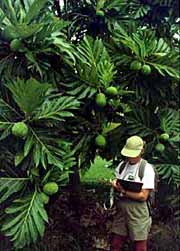 Breadfruit trees are perennial and produce many fruits each year. Just 100 g of breadfruit (approximately ½ cup) provides 25% of the recommended daily allowance (RDA) for fibre, and 5–10% of the RDA for protein, magnesium, potassium, phosphorus, thiamine (B1), and niacin (B3). It also provides some carotenoids, such as β-carotene and lutein, which are not present in white rice or white potato. To better understand the cultural relevance and geographic range of breadfruit in current and future climates, Lucy Yang and her colleagues at the Northwestern University, Illinois, USA, have used breadfruit occurrence data collected from previous studies and a global citizen science database, together with a selection of bioclimatic variables, to construct a set of 6 species distribution models that define the current range of climate-viable breadfruit plants. Although the suitable range for breadfruit in the global tropics and subtropics is projected to decrease by approximately 4.5% to 11%, they found that present and future model suitability outputs suggest opportunities to successfully expand breadfruit cultivation over the next decades in sub-Saharan Africa, where food insecurity is coincidentally high.
Breadfruit trees are perennial and produce many fruits each year. Just 100 g of breadfruit (approximately ½ cup) provides 25% of the recommended daily allowance (RDA) for fibre, and 5–10% of the RDA for protein, magnesium, potassium, phosphorus, thiamine (B1), and niacin (B3). It also provides some carotenoids, such as β-carotene and lutein, which are not present in white rice or white potato. To better understand the cultural relevance and geographic range of breadfruit in current and future climates, Lucy Yang and her colleagues at the Northwestern University, Illinois, USA, have used breadfruit occurrence data collected from previous studies and a global citizen science database, together with a selection of bioclimatic variables, to construct a set of 6 species distribution models that define the current range of climate-viable breadfruit plants. Although the suitable range for breadfruit in the global tropics and subtropics is projected to decrease by approximately 4.5% to 11%, they found that present and future model suitability outputs suggest opportunities to successfully expand breadfruit cultivation over the next decades in sub-Saharan Africa, where food insecurity is coincidentally high.
Access the full paper at https://journals.plos.org/climate/article?id=10.1371/journal.pclm.0000062
5. Rise of precision agriculture exposes the food system to new threats
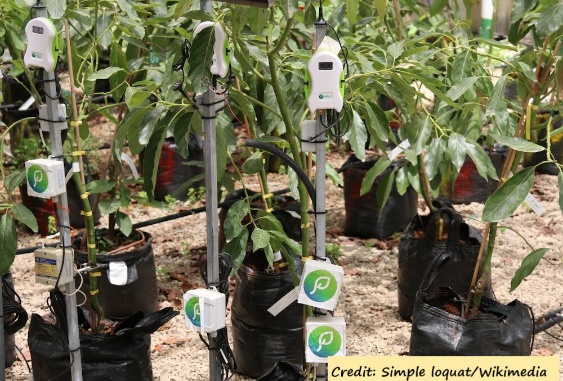 Way back in 1999, Doug Smith, Canada, talked about ‘The Good, Bad and Ugly of Precision Farming’. While things have improved, it is still not the panacea (https://www.no-tillfarmer.com/articles/3746-the-good-bad-and-ugly-of-precision-farming?v=preview). In many countries, farmers are increasingly adopting precision farming, by using data collected by GPS, satellite imagery, internet-connected sensors, and other technologies. While these activities can help increase crop yields and reduce costs, the technology behind these activities creates an opportunity for extremists, terrorists, and dissident governments to attack agricultural machinery, and to disrupt food production. Although farmers are not ideal targets for ransomware attacks, farms can be attractive targets for hackers with other motives, including terrorism. An attacker can find ways to exploit vulnerabilities in fertilizer technology that could cause farmers to accidentally apply too much or too little nitrogen fertilizer to a particular crop. A 2018 Department of Homeland Security report, which surveyed farmers that practiced precision farming across the United States, found that many do not fully understand the cyber threats posed by precision farming, and that they do not take these cyber risks seriously enough.
Way back in 1999, Doug Smith, Canada, talked about ‘The Good, Bad and Ugly of Precision Farming’. While things have improved, it is still not the panacea (https://www.no-tillfarmer.com/articles/3746-the-good-bad-and-ugly-of-precision-farming?v=preview). In many countries, farmers are increasingly adopting precision farming, by using data collected by GPS, satellite imagery, internet-connected sensors, and other technologies. While these activities can help increase crop yields and reduce costs, the technology behind these activities creates an opportunity for extremists, terrorists, and dissident governments to attack agricultural machinery, and to disrupt food production. Although farmers are not ideal targets for ransomware attacks, farms can be attractive targets for hackers with other motives, including terrorism. An attacker can find ways to exploit vulnerabilities in fertilizer technology that could cause farmers to accidentally apply too much or too little nitrogen fertilizer to a particular crop. A 2018 Department of Homeland Security report, which surveyed farmers that practiced precision farming across the United States, found that many do not fully understand the cyber threats posed by precision farming, and that they do not take these cyber risks seriously enough.
6. Our soils: their health and our health
 Most of the nutrients that we get come from the soil; hence the saying we are only as healthy as the soil in which the food we eat is grown. Admittedly, soils can be supplemented with external applications, but that is only to a limited extent. By examining eight pairs of regenerative and conventional farms across the US, researchers led by David Montgomery at the University of Washington, Seattle, USA, found that food produced on regenerative farms contained more magnesium, calcium, potassium, and zinc, as well as more phytochemicals and vitamins B1, B12, C, E, and K. This study supports the theory that what crops “eat” directly impacts its nutrition.
Most of the nutrients that we get come from the soil; hence the saying we are only as healthy as the soil in which the food we eat is grown. Admittedly, soils can be supplemented with external applications, but that is only to a limited extent. By examining eight pairs of regenerative and conventional farms across the US, researchers led by David Montgomery at the University of Washington, Seattle, USA, found that food produced on regenerative farms contained more magnesium, calcium, potassium, and zinc, as well as more phytochemicals and vitamins B1, B12, C, E, and K. This study supports the theory that what crops “eat” directly impacts its nutrition.
Although a lot of people are now talking about soil health, the researchers led by James Harris at Cranfield University, Bedfordshire, United Kingdom, have come up with new thinking. Usually, the term health is used for a living organism. Hence, they suggest a broad programme of research to identify dynamic emergent properties, especially resilience, to determine soil health. They opine that using this as a basis for a new framework will allow assembling and aligning disparate threads of soil science into a cogent and coherent “new theory of soil health,” which is an essential and practical step forward for the sustainable management of global soil resources, across all land uses. (Editor’s note: Maybe one could make a beginning by not calling it ‘the dirt’!)
For more, see https://phys.org/news/2022-08-soil.html?utm_source=nwletter&utm_medium=email&utm_campaign=daily-nwletter
Read the full paper at https://bsssjournals.onlinelibrary.wiley.com/doi/10.1111/ejss.13292b
Access the abstract at https://www.nature.com/articles/s41559-022-01831-x
7. Plant molecular geneticists discover, and begin to crack, the epigenetic code
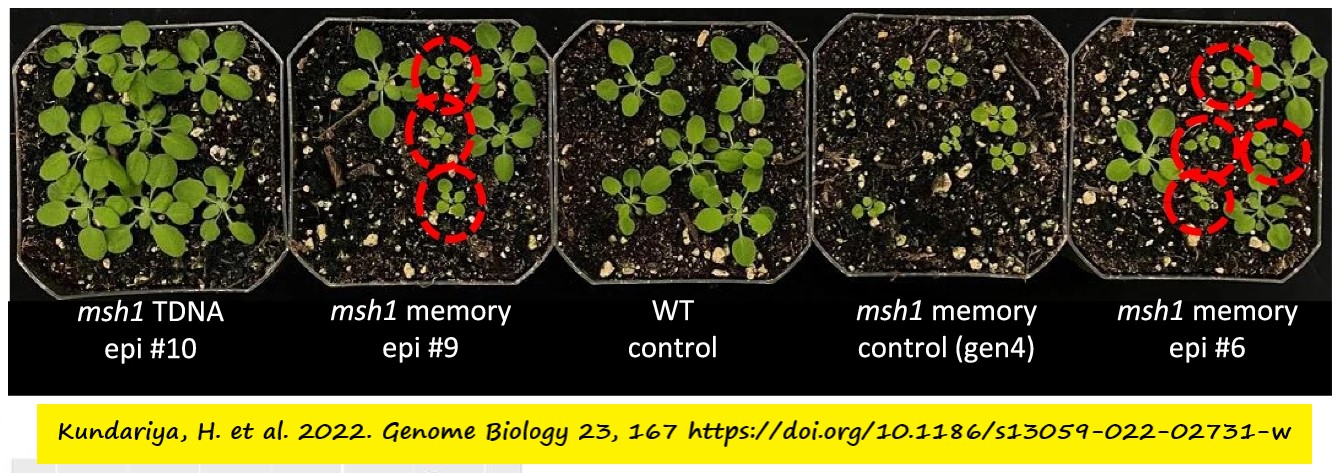 Plants undergo programmed chromatin changes in response to the environment, influencing heritable phenotypic plasticity. The RNA-directed DNA methylation (RdDM) pathway is an essential component of this reprogramming process. The relationship of epigenomic changes to gene networks on a genome-wide basis has been elusive, particularly for intragenic DNA methylation repatterning. When plants sense environmental challenges, such as drought or extended periods of extreme temperatures, they instinctively reprogram their genetic material to survive and perhaps even thrive. The chemical code that triggers those changes can be deciphered and then duplicated to breed more vigorous, productive, and resilient crops. This is the conclusion reached by a team of Penn State molecular plant geneticists, led by Sally Mackenzie, who conducted the first-ever study of those reprogramming effects. They discovered an “epigenetic reprogramming” code, which results in the expressing and overexpressing of some genes and the silencing of others. They manipulated the MSH1 gene to activate at least four distinct non-genetic states that impact plants’ stress responses and growth vitality. By comparing data from these four states, they identified specific genetic targets of epigenetic changes in the genome, where they were able to locate and decode associated data.
Plants undergo programmed chromatin changes in response to the environment, influencing heritable phenotypic plasticity. The RNA-directed DNA methylation (RdDM) pathway is an essential component of this reprogramming process. The relationship of epigenomic changes to gene networks on a genome-wide basis has been elusive, particularly for intragenic DNA methylation repatterning. When plants sense environmental challenges, such as drought or extended periods of extreme temperatures, they instinctively reprogram their genetic material to survive and perhaps even thrive. The chemical code that triggers those changes can be deciphered and then duplicated to breed more vigorous, productive, and resilient crops. This is the conclusion reached by a team of Penn State molecular plant geneticists, led by Sally Mackenzie, who conducted the first-ever study of those reprogramming effects. They discovered an “epigenetic reprogramming” code, which results in the expressing and overexpressing of some genes and the silencing of others. They manipulated the MSH1 gene to activate at least four distinct non-genetic states that impact plants’ stress responses and growth vitality. By comparing data from these four states, they identified specific genetic targets of epigenetic changes in the genome, where they were able to locate and decode associated data.
For more, see https://www.hortidaily.com/article/9451176/plant-molecular-geneticists-discover-and-begin-to-crack-the-epigenetic-code/
Access the full paper at https://link.springer.com/article/10.1186/s13059-022-02731-w
8. It’s aridity that drives plants’ ability to pull nitrogen from the air
Plants require nitrogen for developing nearly every structure and reaction that takes place in their cells. Without it, they would be unable to produce proteins, create enzymes, or even photosynthesize. With nitrogen in such high demand, it is often one 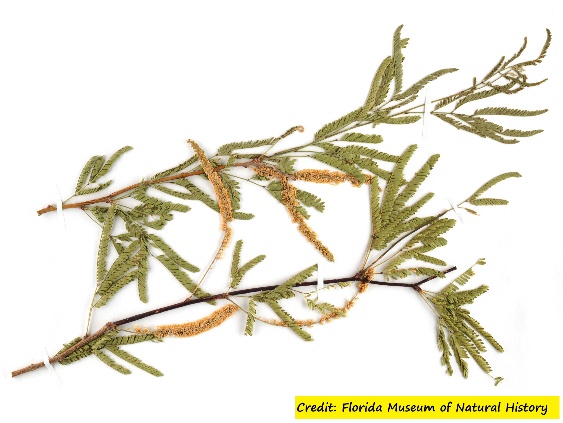 of the biggest limits on plant growth—there simply isn’t enough of it to go around. To make up for this shortage, plants have repeatedly evolved innovative ways to squeeze as much nitrogen as they can out of their surroundings. After extensive study of plant species across the United States, researchers have come to the surprising conclusion that the plants capable of fixing atmospheric nitrogen are most diverse in the arid regions of the United States. Nitrogen fixation has prepared plants for a drier and colder planet. While drought-loving plants, such as cacti, have developed a range of traits that allow them to thrive in the desert, Joshua Doby, lead author of the study suggests that plants with rich nitrogen sources have an intrinsic advantage. The results suggest that it is not nitrogen, or any other soil nutrient, which has the strongest effect on the relative success of N fixers in plant communities. But the aridity is the key driver.
of the biggest limits on plant growth—there simply isn’t enough of it to go around. To make up for this shortage, plants have repeatedly evolved innovative ways to squeeze as much nitrogen as they can out of their surroundings. After extensive study of plant species across the United States, researchers have come to the surprising conclusion that the plants capable of fixing atmospheric nitrogen are most diverse in the arid regions of the United States. Nitrogen fixation has prepared plants for a drier and colder planet. While drought-loving plants, such as cacti, have developed a range of traits that allow them to thrive in the desert, Joshua Doby, lead author of the study suggests that plants with rich nitrogen sources have an intrinsic advantage. The results suggest that it is not nitrogen, or any other soil nutrient, which has the strongest effect on the relative success of N fixers in plant communities. But the aridity is the key driver.
Access the abstract at https://onlinelibrary.wiley.com/doi/10.1111/geb.13535
Events: (May 2023)
1. ICAA 2023: International Conference on Agroforestry and Agriculture
04-05 May 2023, Rome, Italy 
For more, see https://waset.org/agroforestry-and-agriculture-conference-in-may-2023-in-rome
2. ICABE 2023: International Conference on Agriculture, Biotechnology, and Environment
04-05 May 2023, Amsterdam, the Netherlands 
For more, see https://waset.org/agriculture-biotechnology-and-environment-conference-in-may-2023-in-amsterdam
3. ICCSA 2023: International Conference on Climate-Smart Agriculture
 11-12 May 2023, Berlin, Germany
11-12 May 2023, Berlin, Germany
For more, see https://waset.org/climate-smart-agriculture-conference-in-may-2023-in-berlin
4. ICAEB 2023: International Conference on Agriculture and Environmental Biotechnology
11-12 May 2023, Paris, France 
For more, see https://waset.org/agriculture-and-environmental-biotechnology-conference-in-may-2023-in-paris
4. ICAEE 2023: International Conference on Agriculture, Ecosystems, and Environment
15-16 May 2023, Montreal, Canada 
For more, see https://waset.org/agriculture-ecosystems-and-environment-conference-in-may-2023-in-montreal
5. ICAB 2023: International Conference on Agriculture and Biodiversity 
22-23 May 2023, Vancouver, Canada
For more, see https://waset.org/agriculture-and-biodiversity-conference-in-may-2023-in-vancouver
6. ICAAI 2023: International Conference on Agriculture and Artificial Intelligence
 22-23 May 2023, Barcelona, Spain
22-23 May 2023, Barcelona, Spain
For more, see https://waset.org/agriculture-and-artificial-intelligence-conference-in-may-2023-in-barcelona
Other Topics of Interest
1. Organic and inorganic fertilizers effects on the performance of tomato and cucumber
Access the full paper at https://www.nature.com/articles/s41598-022-16497-5
2. Scaling agroecology: “Why is something so compelling also so contentious?”
For more, see https://foodtank.com/news/2022/07/scaling-agroecology/
3. Replacing pesticides with ants to protect crops
For more, see https://phys.org/news/2022-08-pesticides-ants-crops.html?utm_source=nwletter&utm_medium=email&utm_campaign=daily-nwletter
Access the full paper at https://royalsocietypublishing.org/doi/10.1098/rspb.2022.1316
4. Growing the impacts of climate-smart agriculture
For more, see https://www.nationalacademies.org/news/2022/07/growing-the-impacts-of-climate-smart-agriculture?utm_source=NASEM+News+and+Publication%E2%80%A6%201/5 and follow the link therein to watch the Webinar
5. Researchers add second copy of gene to give rice a 40% yield boost
For more, see https://phys.org/news/2022-08-gene-rice-yield-boost.html?utm_source=nwletter&utm_medium=email&utm_campaign=daily-nwletter
Access the abstract (1) at https://www.science.org/doi/10.1126/science.abi8455 and (2) at https://www.science.org/doi/10.1126/science.abi8455
6. Industrials need to put sustainability at the core of their business strategies
7. Earlier wheat planting will boost yields in eastern India
Access the full paper at https://www.nature.com/articles/s43016-022-00549-0
8. A sustainable path to eliminate hunger in Africa
Access the abstract at https://www.nature.com/articles/s43016-022-00572-1
9. Effectiveness of biodiversity conservation in national parks is associated with socioeconomic conditions
Access the abstract at https://www.nature.com/articles/s41893-022-00932-6
10. New fungus to help Australian farmers fight fast-spreading weed
11. Home gardens are ‘living gene banks’ that sustain livelihoods in Central Asia
12. Study shows a single cover crop can outperform mixtures
For more, see https://phys.org/news/2022-08-crop-outperform-mixtures.html?utm_source=nwletter&utm_medium=email&utm_campaign=daily-nwletter
Access the full paper at https://www.cambridge.org/core/journals/weed-science/article/importance-of-species-selection-in-cover-crop-mixture-design/EBDAE1B3F1AEECF43A3F800B9579CBFE
13. Review of Vaccinium breeding research and prospects for its future directions
For more, see https://phys.org/news/2022-08-vaccinium-prospects-future.html?utm_source=nwletter&utm_medium=email&utm_campaign=daily-nwletter
Access the full paper at https://academic.oup.com/hr/article/doi/10.1093/hr/uhac083/6566416?login=false
14. Plants can measure the intensity of salt stress
For more, see https://phys.org/news/2022-08-intensity-salt-stress.html?utm_source=nwletter&utm_medium=email&utm_campaign=daily-nwletter
Access the abstract at https://www.sciencedirect.com/science/article/abs/pii/S1534580722005627?via%3Dihub
15. World’s first genomic study shows why invasive species are so successful
Access the full paper at https://www.science.org/doi/10.1126/sciadv.abo5115
16. Apple trees’ natural response to virus mirrors genetic modification mechanism, study shows
17. ‘Dream’ discovery could sow crops better equipped to weather the climate change storm
18. Regulation of fruit development and ripening by DNA methylation
19. Plasma-produced gas helps protect plants from pathogens
For more, see https://www.sciencedaily.com/releases/2022/08/220819094554.htm
Access the full paper at https://journals.plos.org/plosone/article?id=10.1371/journal.pone.0269863
20. Agri-environment measures boost wildlife populations in long-term farm study
Access the full paper (1) at https://besjournals.onlinelibrary.wiley.com/doi/10.1111/1365-2664.14246
Access the full paper (2) at https://royalsocietypublishing.org/doi/10.1098/rspb.2015.1740
21. Plants quick to let their flowers fade for protection
For more, see https://phys.org/news/2022-07-quick.html?utm_source=nwletter&utm_medium=email&utm_campaign=daily-nwletter
Access the full paper at https://mbmg.pensoft.net/article/84331/
22. Plant diversity promotes healthier land: study
For more, see https://www.ualberta.ca/folio/2022/07/plant-diversity-promotes-healthier-land-study.html
Access the abstract at https://www.nature.com/articles/s41559-022-01794-z
23. Genome-wide association study of Senegalese sorghum seedlings responding to a Texas isolate of Colletotrichum sublineola
For more, see https://www.nature.com/articles/s41598-022-16844-6
24. VegSense makes sense for forest studies
For more, see https://phys.org/news/2022-08-vegsense-forest.html?utm_source=nwletter&utm_medium=email&utm_campaign=daily-nwletter
Access the full paper at https://besjournals.onlinelibrary.wiley.com/doi/10.1111/2041-210X.13927
25. Signalling ‘stressed-out’ plants
For more, see https://phys.org/news/2022-08-stressed-out.html?utm_source=nwletter&utm_medium=email&utm_campaign=daily-nwletter
Access the abstract at https://www.nature.com/articles/s41580-022-00499-2
26. Global spread of powdery mildew through migration and trade
Access the full paper at https://www.nature.com/articles/s41467-022-31975-0
27. How GMOs and crop gene editing can increase genetic diversity and help contain climate change
Access the full paper at https://journals.plos.org/plosbiology/article?id=10.1371/journal.pbio.3001716
28. A fresh look into grasslands as carbon sinks
For more, see https://phys.org/news/2022-08-fresh-grasslands-carbon.html?utm_source=nwletter&utm_medium=email&utm_campaign=daily-nwletter
Access the abstract at https://www.science.org/doi/10.1126/science.abo2380
29. Team discovers new plant gene reprogramming mechanism
30. How year-round crops could reduce farm pollution in the Mississippi River
31. Algorithmic pest control
For more, see https://phys.org/news/2022-08-algorithmic-pest.html?utm_source=nwletter&utm_medium=email&utm_campaign=daily-nwletter
Access the abstract at https://www.inderscienceonline.com/doi/abs/10.1504/IJWMC.2022.124813
32. Parasitic behaviour of the root-knot nematode is negatively regulated by root-derived volatiles of C. metuliferus
33. Performance of crop-boosting bacteria may depend on delivery method
Access the full paper at https://www.frontiersin.org/articles/10.3389/fmicb.2022.791110/full
34. Researchers find key to solving serious wine grape issue
For more, see https://phys.org/news/2022-07-key-wine-grape-issue.html?utm_source=nwletter&utm_medium=email&utm_campaign=daily-nwletter
Access the full paper (1) at https://www.frontiersin.org/articles/10.3389/fpls.2022.921961/full
Access the abstract of paper 2 at https://www.sciencedirect.com/science/article/abs/pii/S1878614622000356?via%3Dihub
35. Climate change is altering the chemistry of wine
36. Understanding cooperation and conflict in plant symbionts
Access the full paper at https://royalsocietypublishing.org/doi/10.1098/rspb.2022.0477
37. Speeding up evolution at genome-level by alternative chromosome configuration
For more, see https://www.sciencedaily.com/releases/2022/08/220804130539.htm
Access the full paper at https://www.cell.com/cell/fulltext/S0092-8674(22)00797-8?_returnURL=https%3A%2F%2Flinkinghub.elsevier.com%2Fretrieve%2Fpii%2FS0092867422007978%3Fshowall%3Dtrue
38. Scientists identify a plant molecule that sops up iron-rich heme
39. Brazil farmers bet on environmentally friendly cotton
40. How scientists are genetically tweaking cotton to make it more sustainable
41. Researchers show potential for improved water-use efficiency in field-grown plants
For more, see Access the full paper at https://academic.oup.com/jxb/advance-article/doi/10.1093/jxb/erac218/6589979?login=false
42.Water scarcity among top 10 food security threats–study
For more, see https://www.scidev.net/global/news/water-scarcity-among-top-10-food-security-threats-study/
Access the full paper at https://www.cell.com/one-earth/fulltext/S2590-3322(22)00329-3?_returnURL=https%3A%2F%2Flinkinghub.elsevier.com%2Fretrieve%2Fpii%2FS2590332222003293%3Fshowall%3Dtrue#%20
43. A review article clarifies genotype-independent plant transformation
Access the full paper at https://academic.oup.com/hr/article/doi/10.1093/hr/uhac047/6548281?login=false
44. The many ways nature nurtures human well-being
Access the full paper at https://www.science.org/doi/10.1126/sciadv.abn8042
45. How do some cassava varieties evade mosaic virus?
Access the full paper at https://www.nature.com/articles/s41467-022-31414-0
46. Using electricity to remove persistent weeds
Access the full paper at https://phys.org/news/2022-08-electricity-persistent-weeds.html?utm_source=nwletter&utm_medium=email&utm_campaign=daily-nwletter
